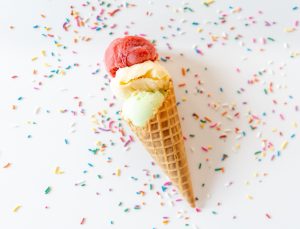 Food cravings are more than just hunger. They have different origins, although being hungry increases cravings. Cravings begin in the reward system. The brain’s reward area is in various regions of the brain’s center. The hunger area is in the hypothalamus at the base of the brain, near the pituitary gland. It controls other rudimentary needs like hunger, thirst, blood pressure, and sleep. The center of the brain’s reward system functions to keep us alive and continue the species. It controls eating, sleeping, sex, and even response to the fight-or-flight response. It rewards the body with a feel-good neurotransmitter called dopamine.
Food cravings are more than just hunger. They have different origins, although being hungry increases cravings. Cravings begin in the reward system. The brain’s reward area is in various regions of the brain’s center. The hunger area is in the hypothalamus at the base of the brain, near the pituitary gland. It controls other rudimentary needs like hunger, thirst, blood pressure, and sleep. The center of the brain’s reward system functions to keep us alive and continue the species. It controls eating, sleeping, sex, and even response to the fight-or-flight response. It rewards the body with a feel-good neurotransmitter called dopamine.
The reward is the carrot, and the craving leads you to it.
You get a dopamine reward for doing activities necessary for your or the species’ survival. It can occur when you’re hungry and eat, even if the food isn’t healthy. It can occur when you’re consuming food while doing something you enjoy. Both examples create a memory since the reward system is also associated with the brain’s memory area. If you enjoyed something associated with a specific food or the food itself, you’re on the pathway of creating a craving. The desire for that dopamine rush leads people to eat certain foods even though they’re not hungry.
Many things cause cravings.
Not all cravings are about memories, emotions, or how food tastes. Some come from fluctuations in hormones. That accounts for pregnancy cravings and children who have pica—a craving to eat something that isn’t food, such as dirt, coins, burnt matches, and more. Each type of pica has a different name and cause. For instance, pregnant women’s pica cravings for ice may be due to iron deficiency. They can also come from hormonal fluctuations, similar to cravings during the menstrual cycle.
There are selective cravings and nonselective ones.
Cravings for a specific food, like cake, snacks, or ice cream, are selective cravings. Nonselective cravings relate to wanting anything to eat. They can occur because a person has true hunger or caused by dehydration and thirst. Sometimes, when people are thirsty, the signals mix in the brain and it’s mistaken for hunger. It’s why juicy watermelon looks so yummy, even if you’re not hungry for anything else. That craving is easy to solve. Drink a glass of water before eating something. If the desire disappears, it was thirst.
- Stress can cause cravings. When people are under stress, they often want relief and crave good feelings that can come from comfort foods. Studies show that increased stress led to more cravings.
- Getting more sleep can help control cravings. When you don’t have adequate sleep, your body produces more ghrelin, the hunger hormone, and less leptin, the satiety hormone. It increases nonselective cravings.
- Reduce cravings by eating more protein, exercising, chewing gum, and drinking more water. Planning healthy snacks and preventing hunger can help curb cravings for high-calorie junk food.
- You can develop cravings for both healthy and unhealthy food. Noticing how good you feel when you are eating healthier can trigger new memories and new cravings. It can create a new pleasure link to more nutritious food.
For more information, contact us today at VIP Fitness Center
